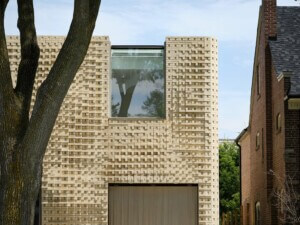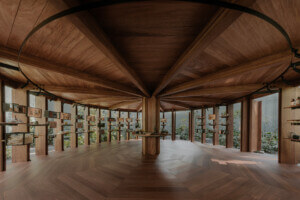Architect: ATELIER ARS
Location: La Floresta, Ajijic, Jalisco, México
Completion Date: 2022
Responding to a request from the Ministry of Culture of the State of Jalisco to “decentralize” cultural centers in the state, Zapopan, Mexico–based architects ATELIER ARS embarked on the design for the Centro para la Cultura y las Artes de la Ribera (Center for Culture and Arts of the Lakeside). Located in the middle of Mexico’s Pacific coastline, the state of Jalisco is anchored by Guadalajara, one of Mexico’s largest cities. The directive to approach a more polycentric diffusion of cultural funding in Jalisco led to a site in Ajijic, a town on Lake Chapala, the largest lake in Mexico.
Combining both adaptive reuse and ground-up elements, ATELIER ARS took inspiration from the temperate local climate and Wixárika culture, whose people are indigenous to the region. The office’s masterplan first incorporated an existing office building and an auditorium with capacity for over 400. The auditorium was shaped by a brick-vaulted portico, which ATELIER ARS took as a baseline material inspiration for their designs. While the existing buildings were not of historical significance, ATELIER ARS chose to reuse them. The firm added a library to serve as the center’s street-facing facade and a longitudinal building hosting a music classroom, dance space, cafeteria, bathrooms, warehouse, amphitheater, and a reflecting pool bordered by stone walls in the center of the site. In plan, the new buildings are situated to form a perimeter border around the site, with the library anchoring the public-facing entrance to the complex.
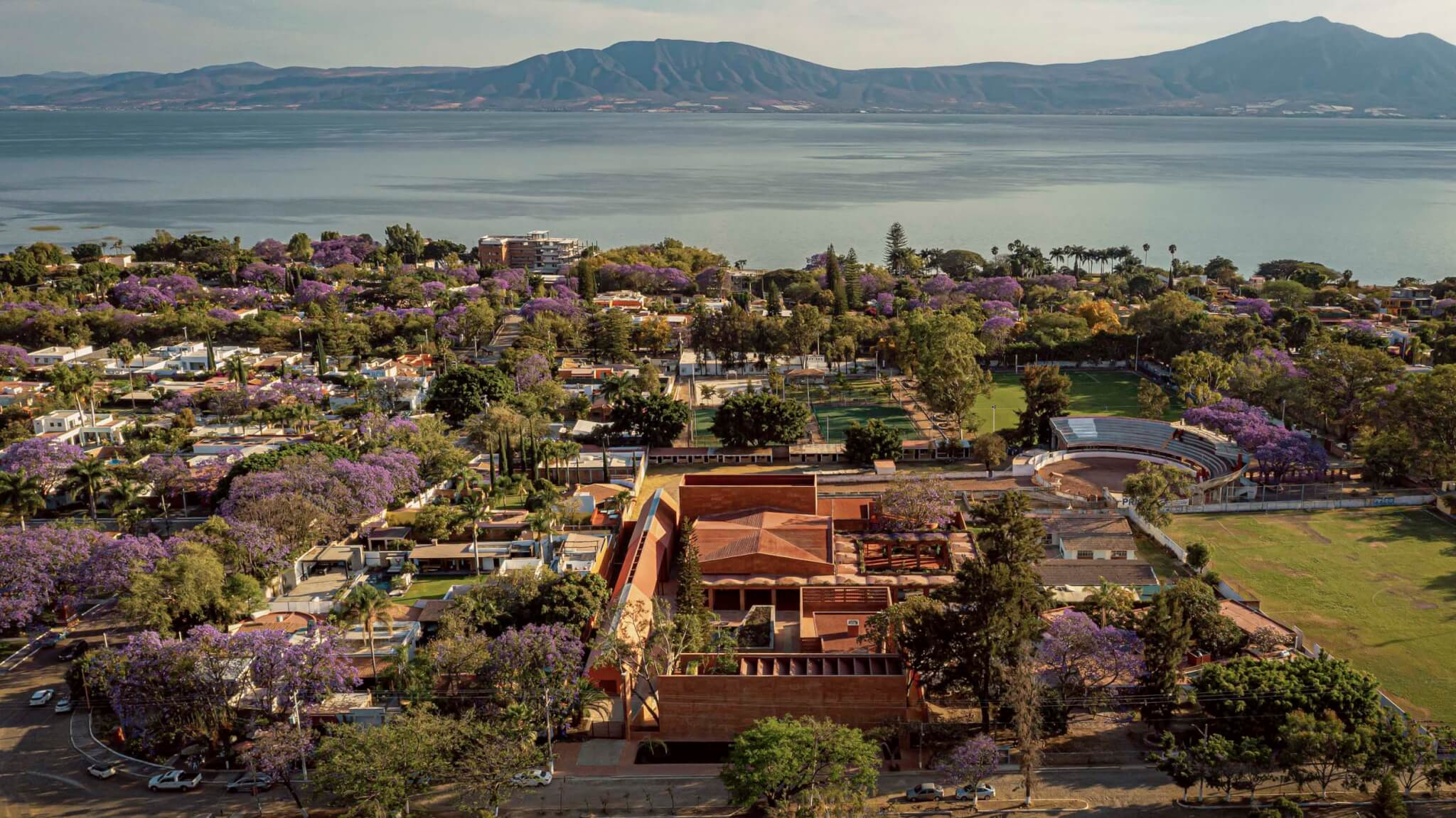
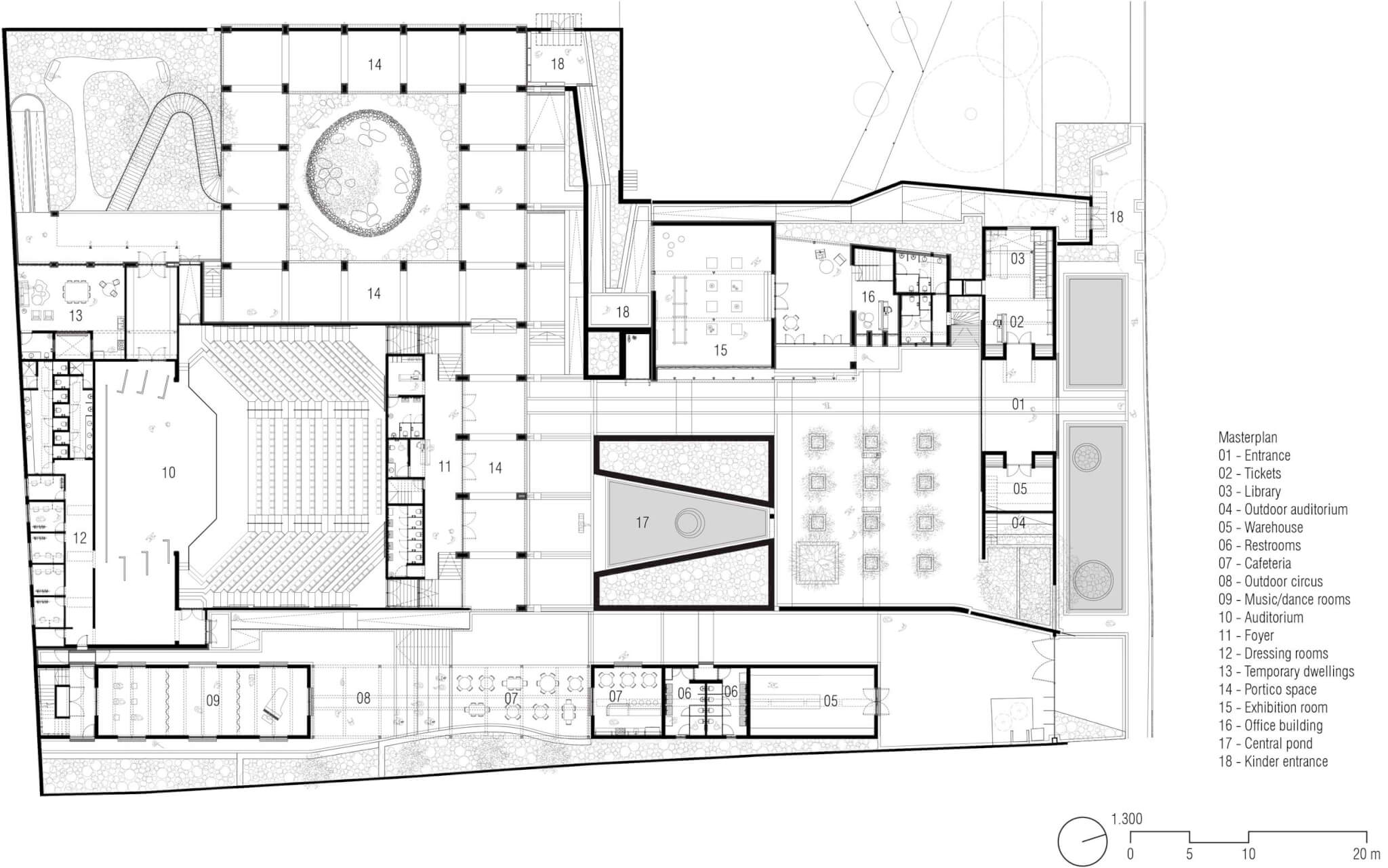
ATELIER ARS principals Alejandro Guerrero and Andrea Soto told AN that the skilled-labor pool of masons local to towns around Lake Chapala guided design decisions as the architects wanted the project to show off the possibilities of masonry work, particularly with traditional building materials. Across the complex, Guerrero and Soto were motivated by the decision to “display the mineral strata of the territory in the buildings to [establish] a local anchorage strategy… and to benefit the local labor and producers with our material decision. Since the beginning, we knew that the community would feel identified with such [a] decision.”
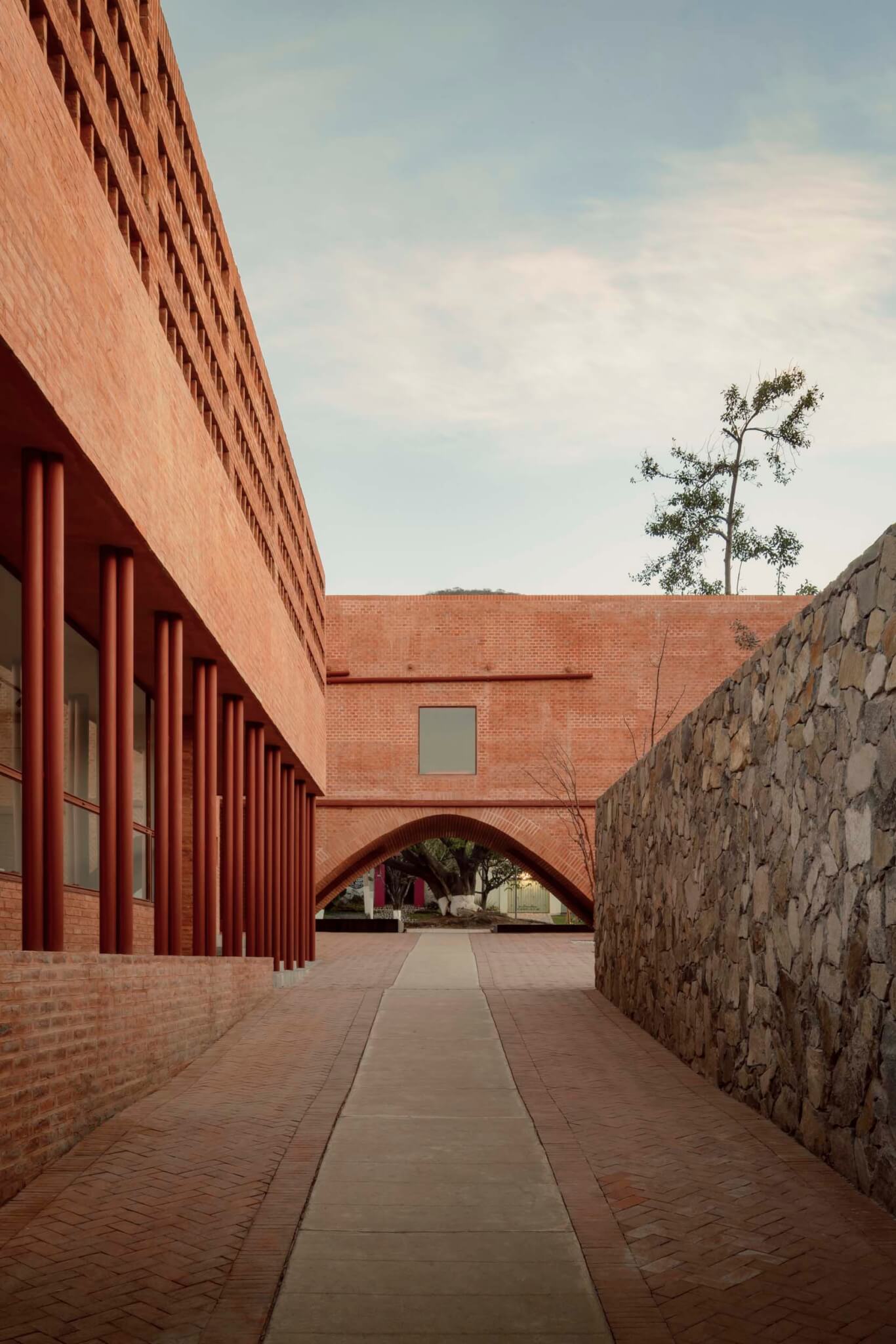
In the existing office building, ATELIER ARS’s design preserved the structural system, which avoided additional expenditures. By reinforcing the structure with a column system and restructuring an existing interior concrete beam, workers were able to construct brick latticework and a metallic core to produce an open-air enclosure for group gatherings. Varying brick cladding concepts were designed for the facade, with workers using red-colored cement joints to offer a sense of uniformity across faces of the building.
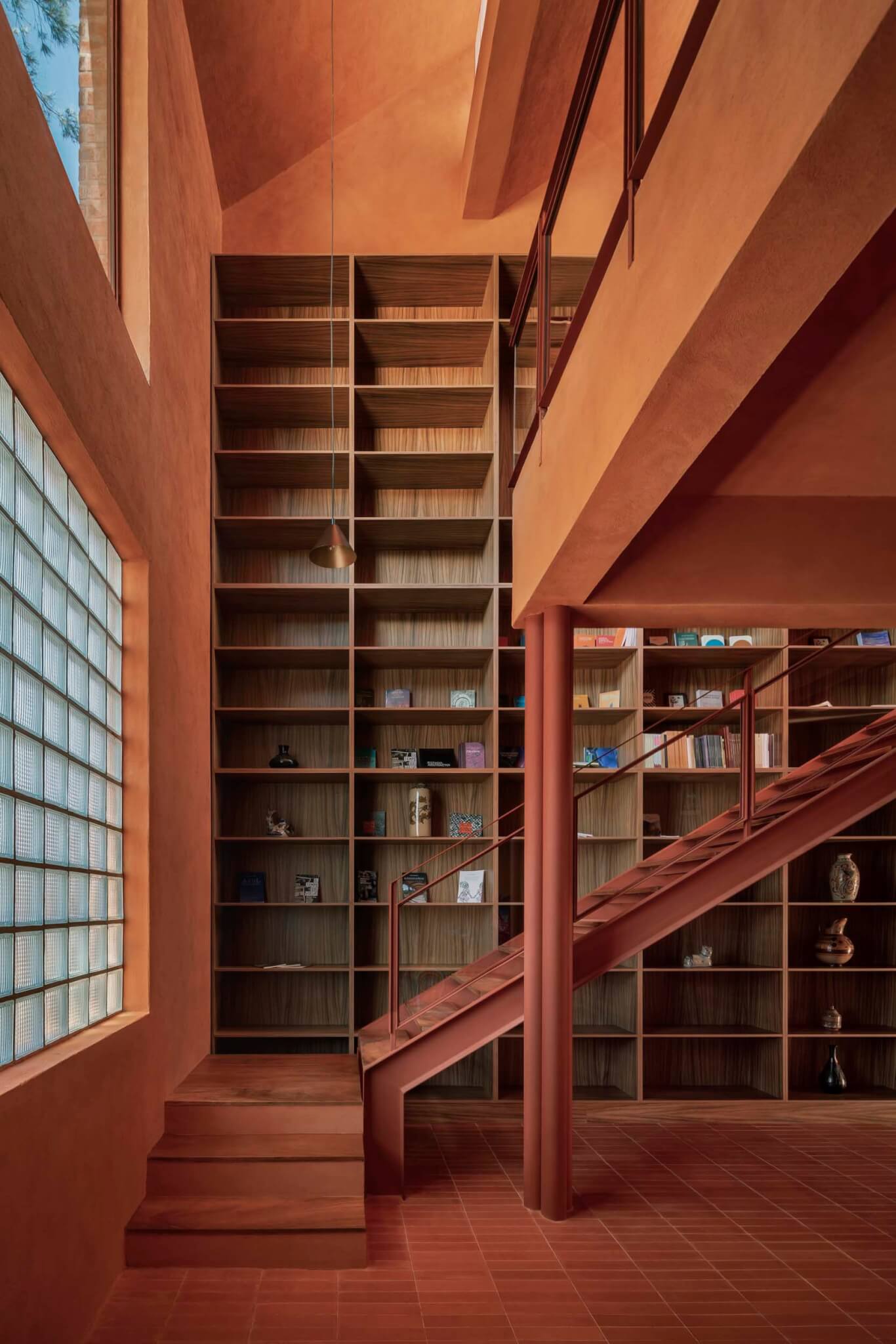
At the main entrance, the library was designed with a sawtooth roof, whose glass blocks diffuse sunlight into a second-level reading room and ground-level brick vault. The entirety of the library building is structured with load-bearing brick walls, which Guerrero and Soto said they chose to demonstrate the value in using high-quality masonry work in public commissions. The load-bearing walls were designed to be 28 centimeters wide (11 inches), which, given a year-round average temperature in the low 70 degree Fahrenheit range, provided “climatic conditions very stable in terms of thermal oscillation,” Guerrero and Soto told AN.

Workers applied a terra-cotta-colored cement coating on the library’s interior, which ATELIER ARS selected to give the entire building material uniformity. A pond runs the length of the facade, broken by two planters that hold species native to the lake.
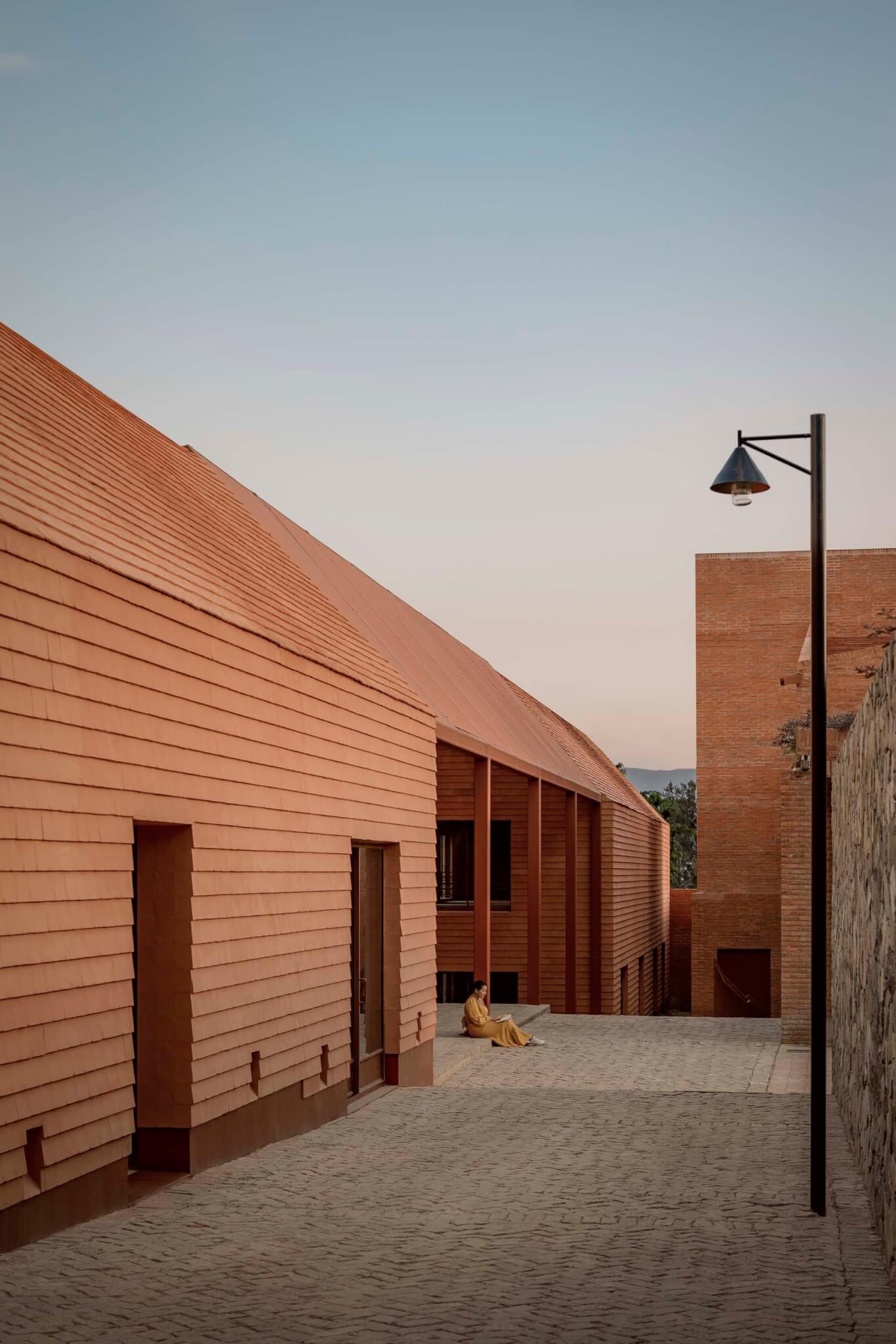
For the longitudinal building, ATELIER ARS pursued a design reminiscent of vernacular housing construction approaches. Clad in ceramic, it evokes tejamanil style cladding, a shingle construction. The building was built around a cement block core wall system and concrete slabs to which the ceramic was attached. Interior spaces were plastered in a cement-like color, allowing “a desirable thickness to ensure an acceptable indoor climate insulation,” Guerrero and Soto said, adding that “no insulated fenestration systems were used in the buildings.”
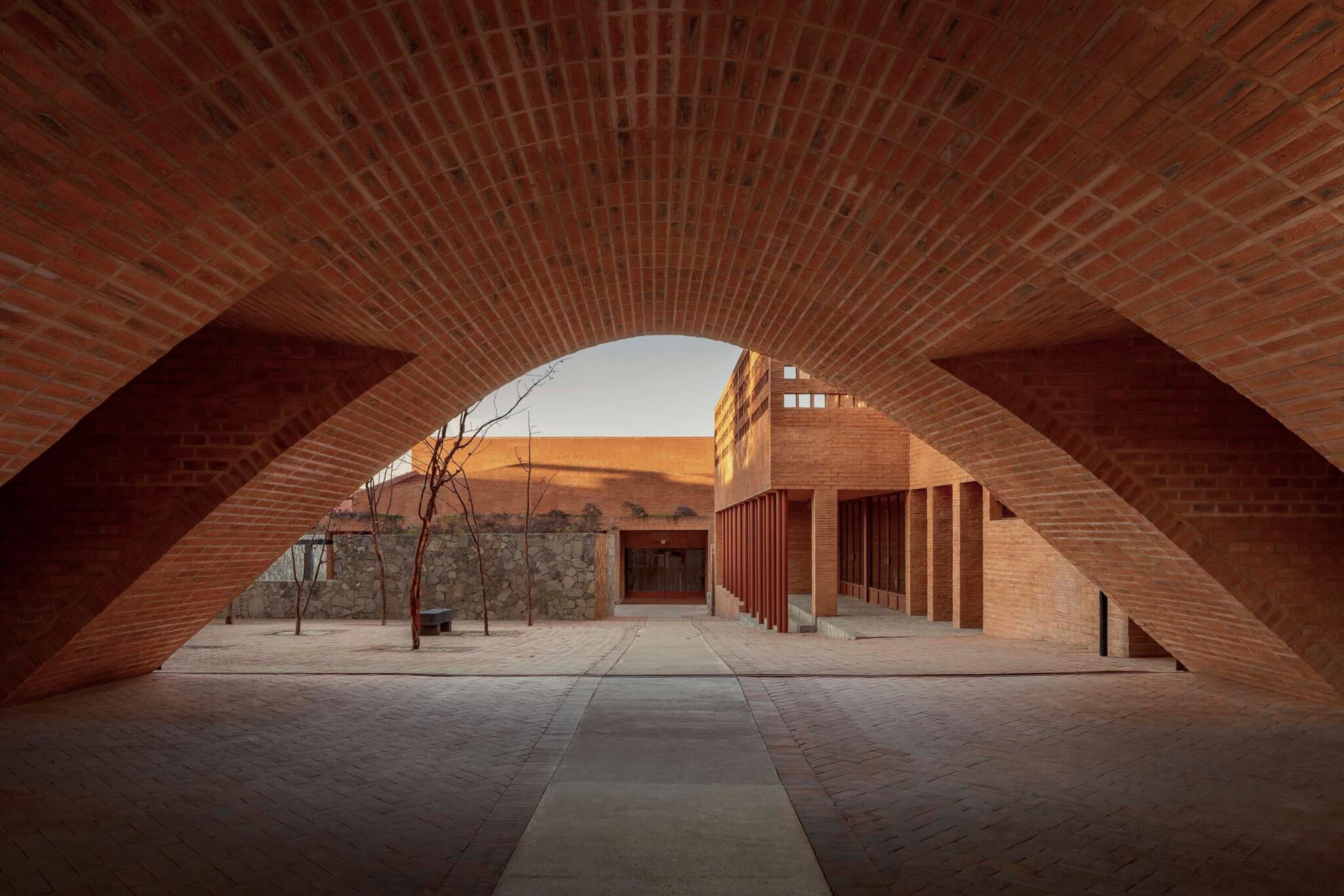
ATELIER ARS was active on-site during construction, working closely with masons to adapt designs as necessitated by construction processes. Guerrero and Soto said that they had to balance the desire for achieving specific details of the project while maintaining an overall “roughness” that the craftsmanship of the masons would show. Guerrero and Soto told AN: “We are interested in recovering universal construction traditions to produce contemporary architecture.” In orienting a design to play to the strengths of local labor through a public commission, ATELIER ARS’s Center for Culture and Arts of the Lakeside shows proof-of-concept of an elegant and climatically-appropriate facade by doing just that.
Project Specifications
- Architect: ATELIER ARS
- Location: La Floresta, Ajijic, Jalisco, México
- Completion Date: 2022
- Client: Ministry of Culture of the State of Jalisco
- Builder: Secretariat of Infrastructure and Public Works of the State of Jalisco (SIOP)
- Brick and Ceramic: Local craftsman








